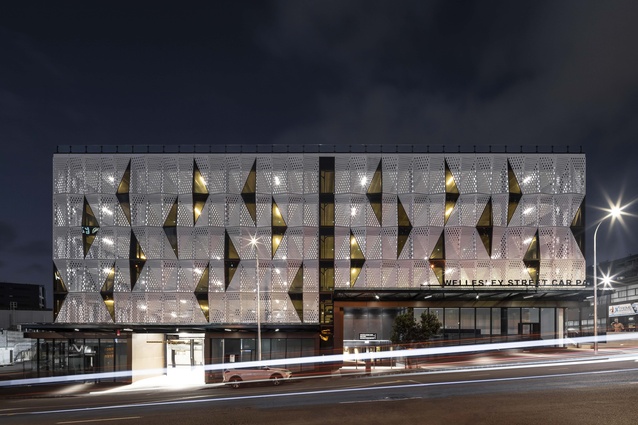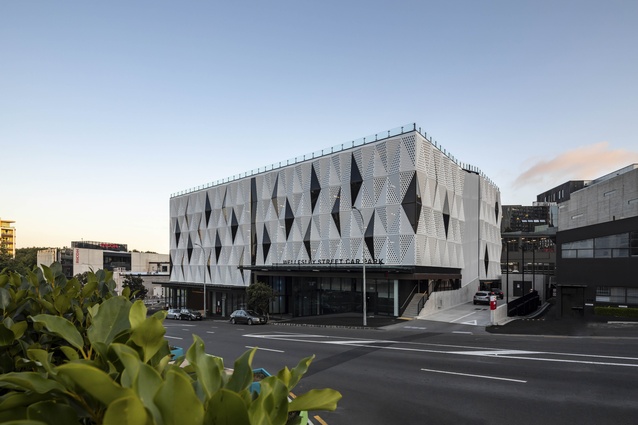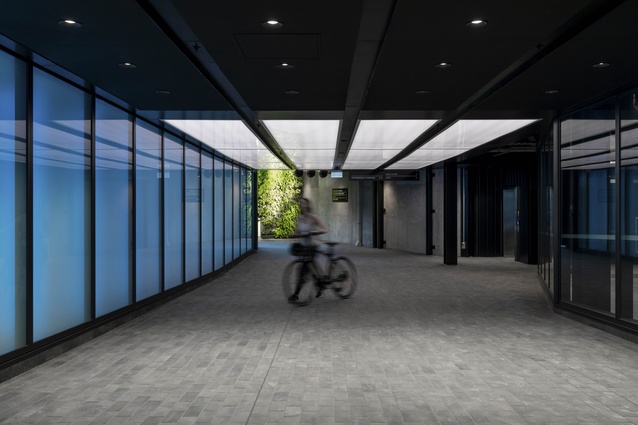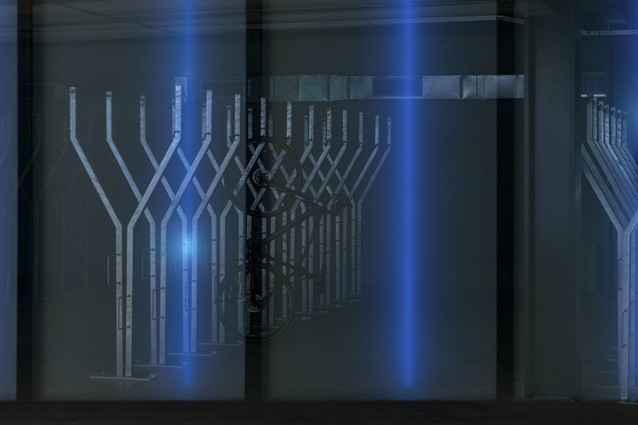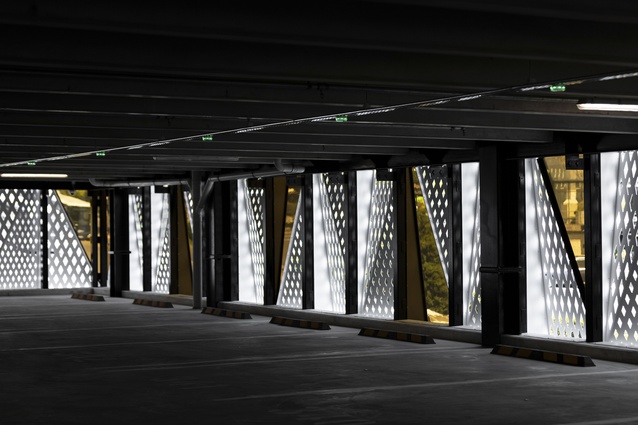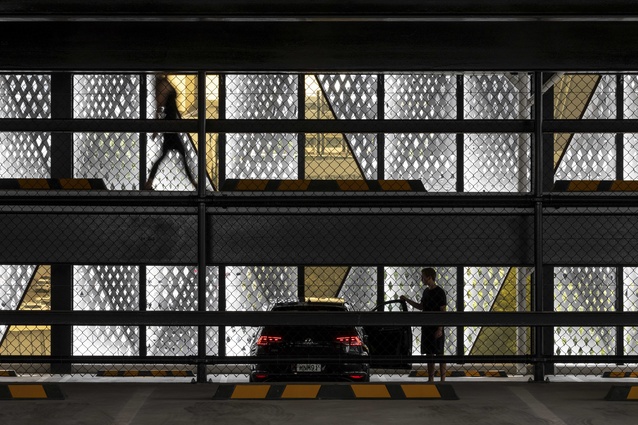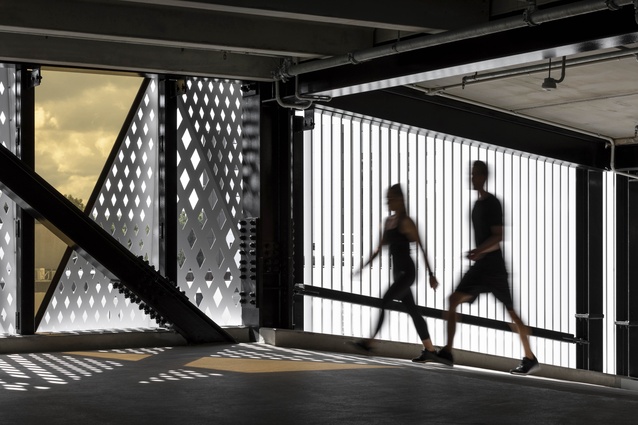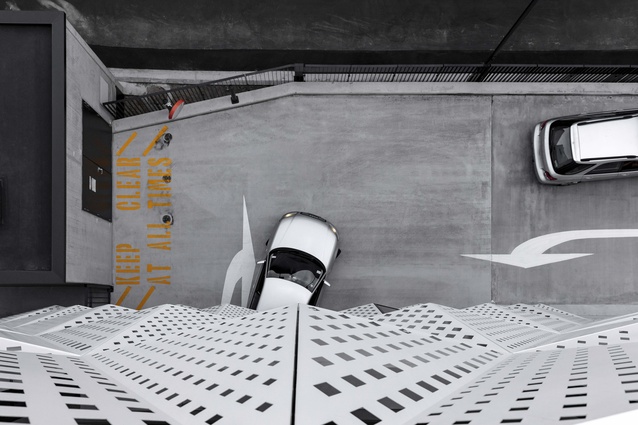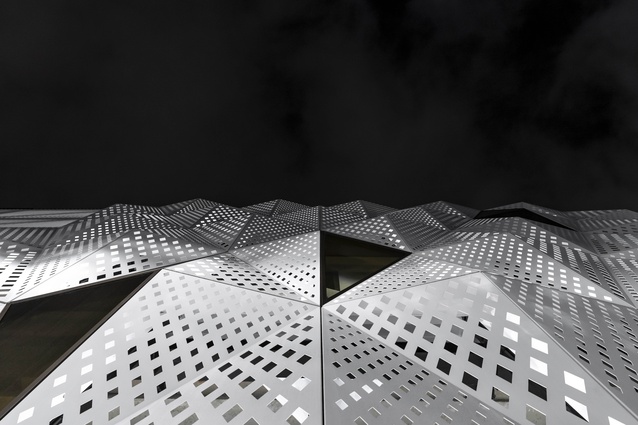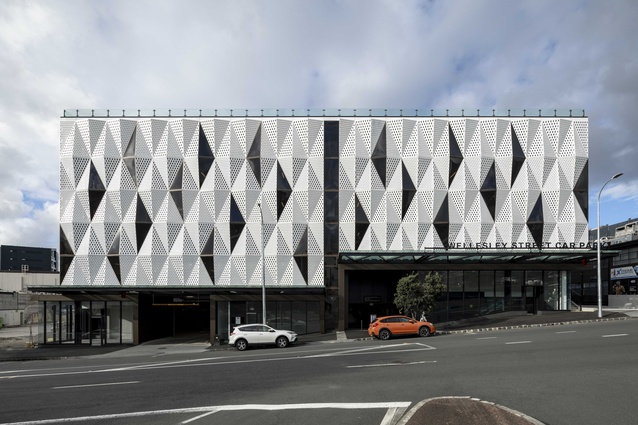Future fit: Les Mills Transport Hub
The recently opened Transport Hub at Les Mills Auckland City forms part of the gym’s ‘permeable campus’, providing a space which is both flexible and designed to increase community engagement.
A cluster of buildings at Les Mills’ Auckland city gym, comprising two existing pre-war properties with limited parking facilities and a convoluted pedestrian access linking Victoria Street West and Wellesley Street, has been transformed to create a ‘permeable campus’ model and increased community engagement.
Warren and Mahoney’s new 11,600m2 ‘transport hub’ provides a bold, art-enriched public connection through the Les Mills campus, with proposed retail tenancies compatible with the fitness brand activating the Wellesley Street frontage.
“The Les Mills Transport Hub required an urgent solution to a potentially short-term problem,” explains project lead architect Shannon Joe. “The client brief called for increased car parking in the short-term, with the long-term prospect that Auckland’s reliance on car parking will diminish.”
Warren and Mahoney’s challenge was to design a sustainable building for the future while preserving the gym’s brand identity and reputation for innovation and wellbeing. “The Transport Hub had to be more than a carpark building,” says Joe. “The through-site link served as a catalyst to activate and provide public amenity, including retail and public end-of-trip bicycle facilities, into the building serving the whole campus.”
The building has been designed to be permanent but the interior has been structurally designed to be flexible and adaptable. Already the large carpark floors have been utilised by Les Mills for cardio training and group workouts and plans are for the hub to be repurposed as either an extension to the gym or for other commercial activity. “Additional head height on the top floor was included for immediate conversion when needed and floors can be partially or fully removed to suit the intended space and height requirements,” explains Joe.
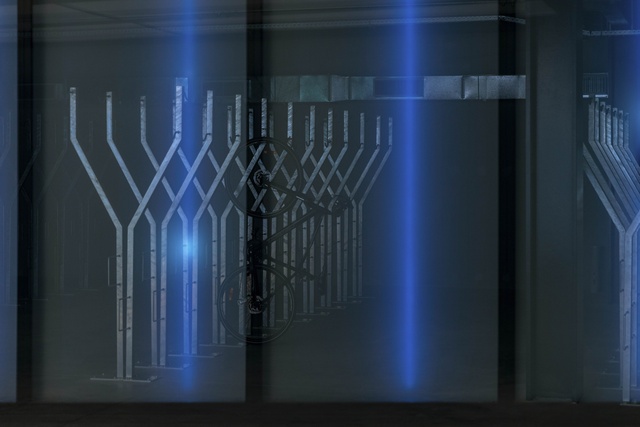
The façade’s sculptural perforated-metal screens are made up of an array of folding geometrical triangles, allowing the spaces behind to breathe. Glazed sections provide depth and partial visibility into the activity inside, while light emitted through the small screen perforations activates and enlivens the façade to the street at night. It is envisioned that later when the building is repurposed the façade can be flat-packed and recycled if necessary.
The central core stairs and lift are located at the rear of the building, making the connection to the central through-site link placed at the end of the laneway between the two buildings. An electronically-controlled illuminated wall acts as a vibrant ‘living’ artwork and the lower level link ceiling is also fully illuminated to create spatial uplift.
The hub includes E-car charging stations and bike parking for 164 bikes, along with ‘retail’ space for bike repairs and sundries.

